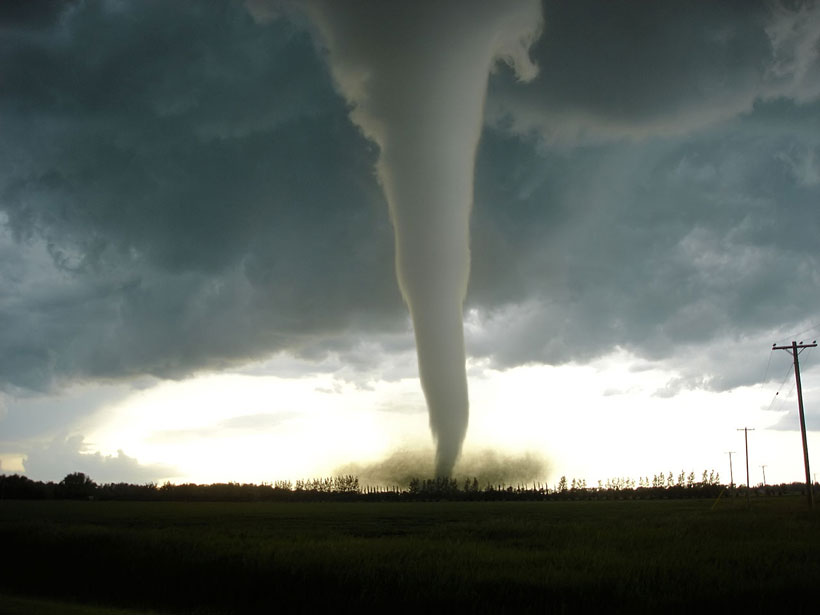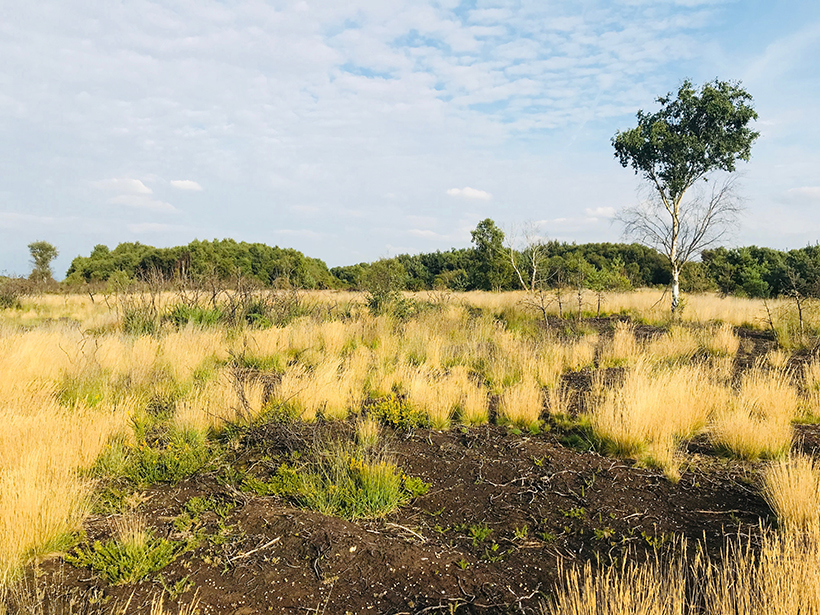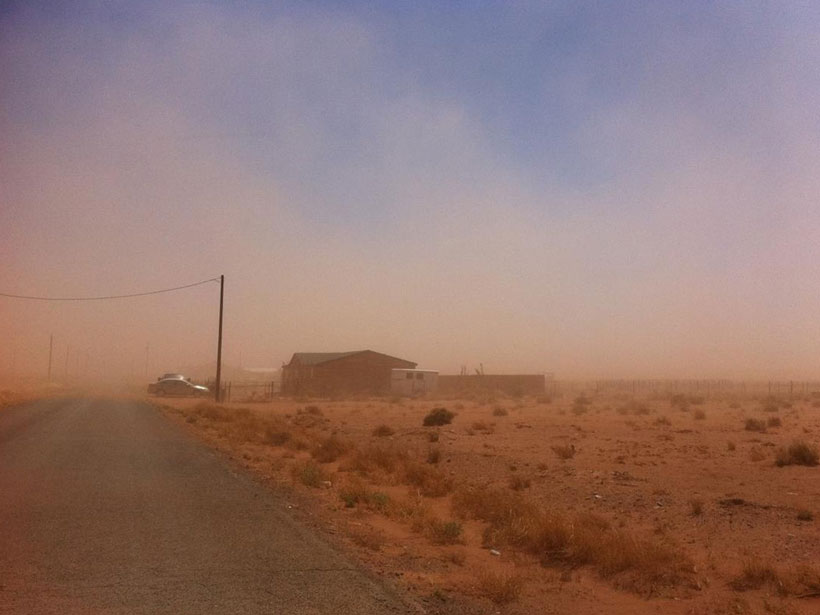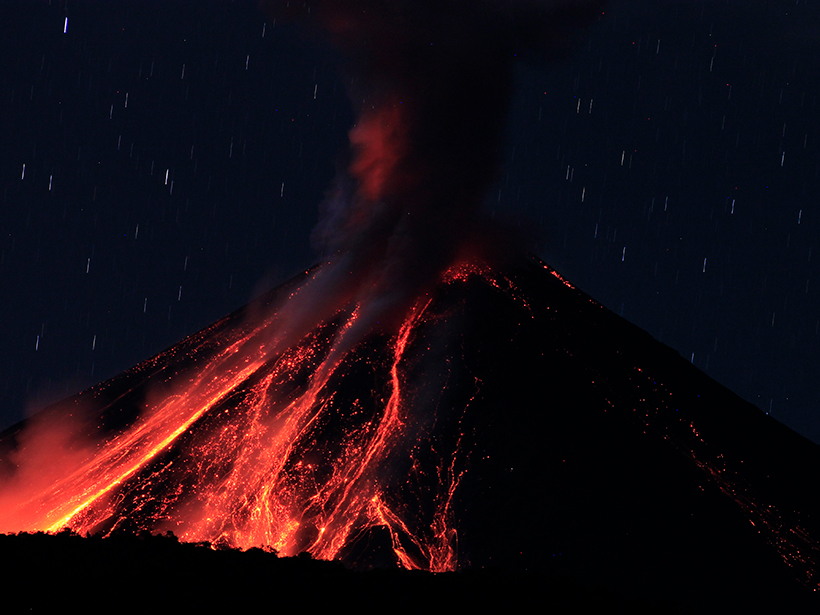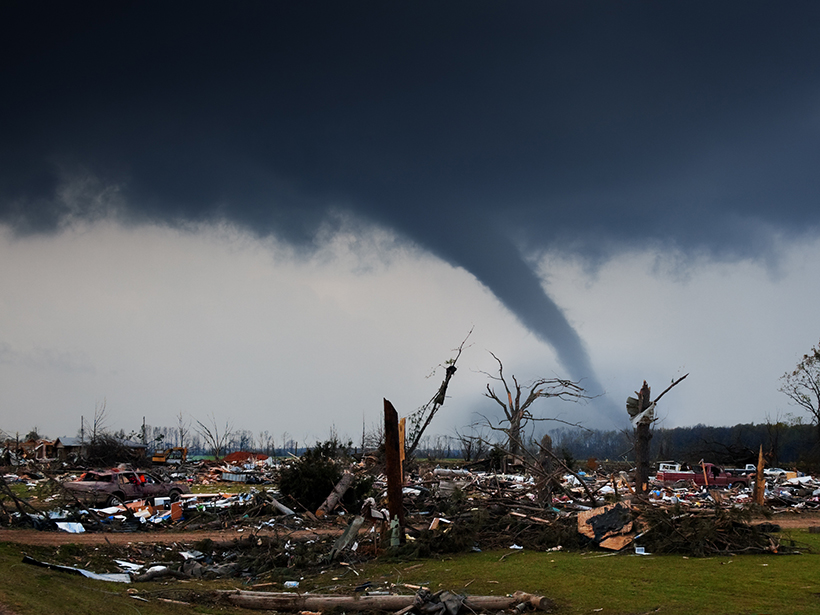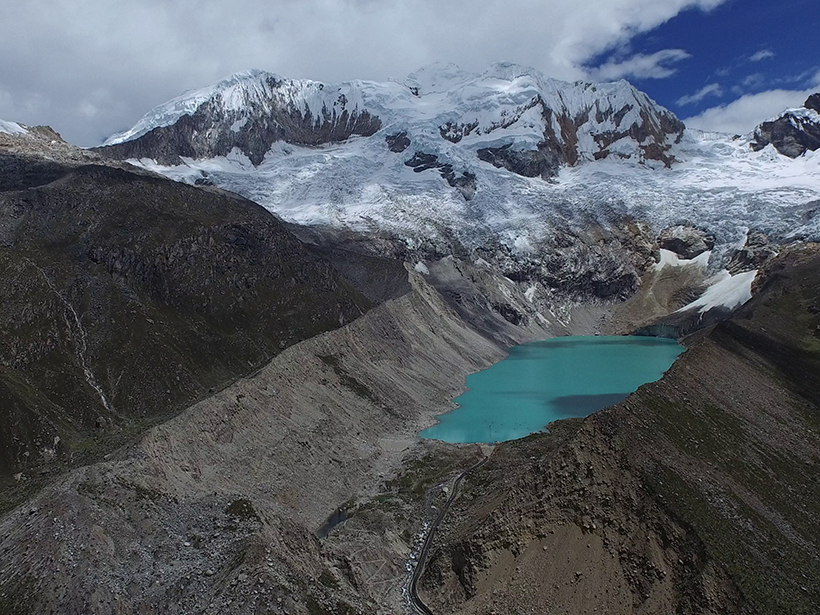A yearlong project aims to find more than 150 “missing” tornadoes thought to hit Canada each year.
Hazards & Disasters
Ancient Fires and Indigenous Knowledge Inform Fire Policies
Global Paleofire Working Group 2: Diverse Knowledge Systems for Fire Policy and Biodiversity Conservation; Egham, United Kingdom, 4–9 September 2018
When the River Meets the Sea: Estuary Sediments and Hypoxia
Scientists know that low-oxygen dead zones are growing worldwide. New research sheds light on what that will mean for estuary systems if trends continue.
Better Approaches to Managing Drought in the American Southwest
USGS Southwest Region 2018 Science Exchange Workshop: Drought Science; Fort Collins, Colorado, 25–27 September 2018
Ecuador’s El Reventador Volcano Continually Remakes Itself
A research team from Ecuador’s Geophysical Institute keeps a close eye on an unusually active and unstable volcano in the nation’s remote jungles.
Unused Fiber-Optic Cables Repurposed as Seismic Sensors
So-called dark fiber can serve as regional seismic activity monitors and also detect earthquakes thousands of kilometers away, according to new research.
Westward Expansion, Technology, and Tornado Fatalities
By mining records from 1808 to 2017, researchers can now show just how many lives have likely been saved by technology like radar.
What Do People Drink When They Think Their Tap Water Isn’t Safe?
An analysis of nationwide housing data shows that minority households disproportionately bear the multibillion-dollar economic burden that comes from believing their water is unsafe.
The Dangers of Glacial Lake Floods: Pioneering and Capitulation
During the past 70 years, Peruvian engineers virtually eliminated the risks posed by glacial lake floods. But climate change and a political blind eye are increasing the dangers once again.
Observing Volcanoes from Space
The first multidecadal, satellite-based study of Latin America’s most active volcanoes could help researchers better predict eruptions.

